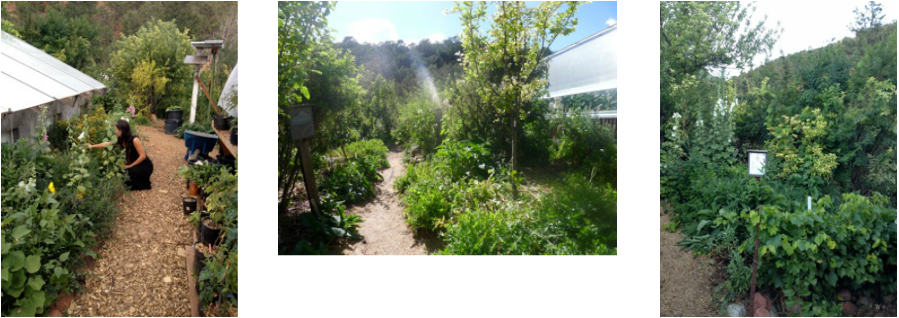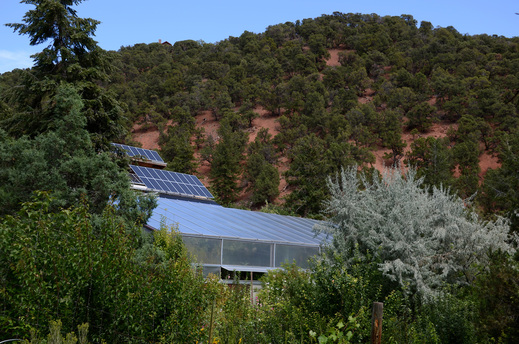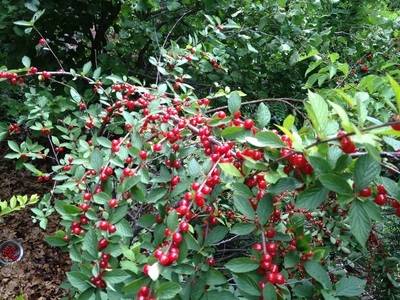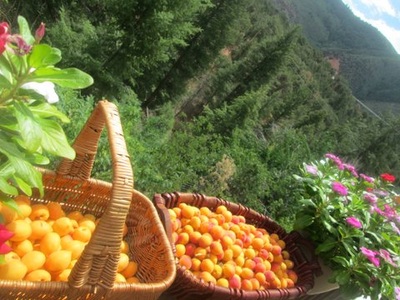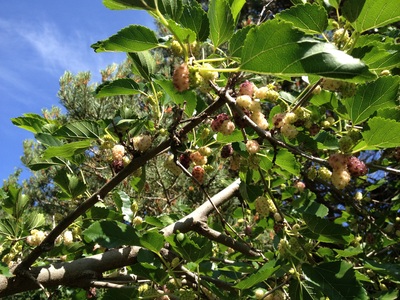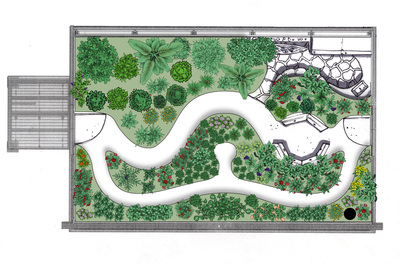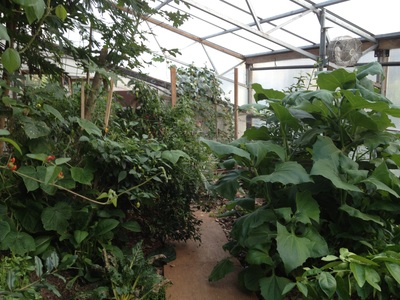Forest Gardens & Edible Landscapes
Forest Gardens are densely stacked poly-cultures of edible and useful plant species. Recognizing the productivity and stability of natural systems, forest gardeners work to re-create their structure and connections while selecting useful species that serve both our needs and those of the garden. Though a newly emerging concept in the west, traditional peoples have cultivated forest gardens for thousands of years in places including Ecuador, Sumatra, Mexico, India, Malaysia and Guatemala.
With the help of our talented and experienced designers, EcoSystems Design can help you create your own Forest Garden. Regardless of property size or location, we can help you find the best plant varieties to suit your needs and work with you to create a beautiful edible space that will offer multiple yields for many years to come.
Forest gardens may consist of up to seven layers of plants; the canopy, mid-story, shrub, herb, ground cover, root and vertical layers. By developing these dense plantings it is possible to incorporate a great deal of diversity into a small area, while proportionally increasing yields. In addition to creating a diverse structure, forest gardens generally utilize a wide array of plants that serve multiple functions. Nitrogen fixing plants are placed next to fruit trees to provide continuous mulch and fertilizer. Flowering plants that are utilized in the understory help to attract beneficial insects to keep pest populations under control, while simultaneously providing beauty and secondary crops such as culinary or medicinal herbs.
With the help of our talented and experienced designers, EcoSystems Design can help you create your own Forest Garden. Regardless of property size or location, we can help you find the best plant varieties to suit your needs and work with you to create a beautiful edible space that will offer multiple yields for many years to come.
Forest gardens may consist of up to seven layers of plants; the canopy, mid-story, shrub, herb, ground cover, root and vertical layers. By developing these dense plantings it is possible to incorporate a great deal of diversity into a small area, while proportionally increasing yields. In addition to creating a diverse structure, forest gardens generally utilize a wide array of plants that serve multiple functions. Nitrogen fixing plants are placed next to fruit trees to provide continuous mulch and fertilizer. Flowering plants that are utilized in the understory help to attract beneficial insects to keep pest populations under control, while simultaneously providing beauty and secondary crops such as culinary or medicinal herbs.
Forest Gardens at the Central Rocky Mountain Permaculture Institute
The forest gardens at CRMPI are some of the most mature in North America. Arranged along a south-facing slope at 7200', these gardens have transformed the character of the landscape, forming a lush and vibrant jungle of growth that provides food, medicine and animal fodder. There is a staggering number of edible plant varieties that call this forest garden home such as apples, pears, plums, peaches, mulberries, cherries, grapes, raspberries & blackberries, gooseberries, asparagus, mints, sage, and on and on. Tours are available by request. Stone terraces play a vital role in the development of these gardens. The terraces stabilize the soil and mulch along the sloping site and create level areas for plant cultivation. They also create micro-climates that extend the growing season by providing a source of thermal mass, absorbing the sun's heat during the day and radiating it out at night. In addition they provide habitat for beneficial animals such as garter snakes who help to control the slug and mice populations.
Bringing the Forest Indoors
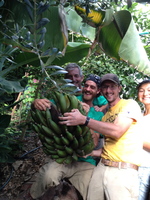
Forest gardening can travel right into the greenhouse. By utilizing many of the same principles a properly designed greenhouse can be transformed into a Mediterranean Forest with an over-story of Figs and Olive or a Tropical Jungle containing Bananas and Papayas.

